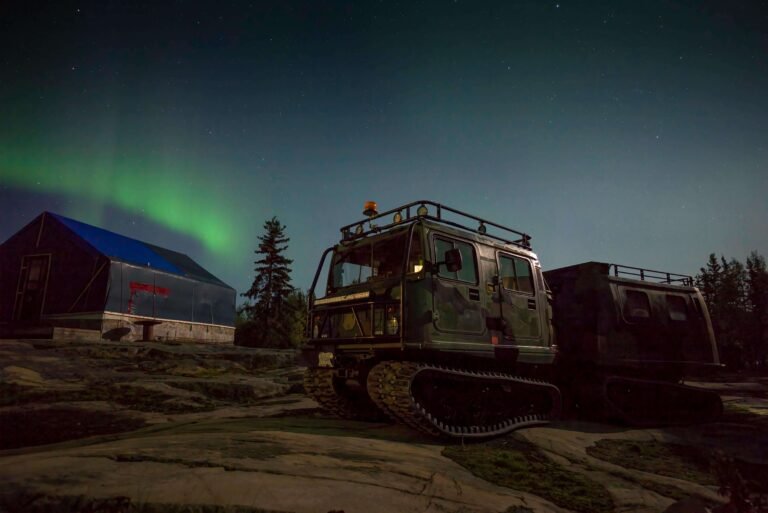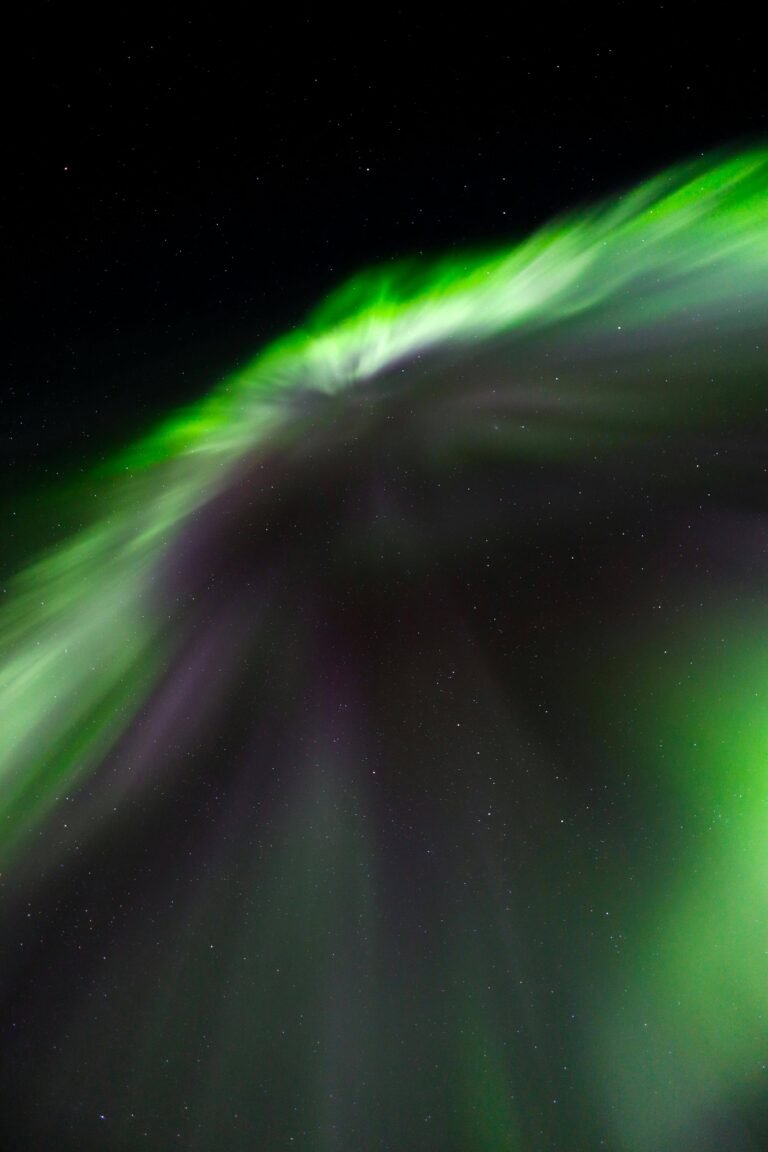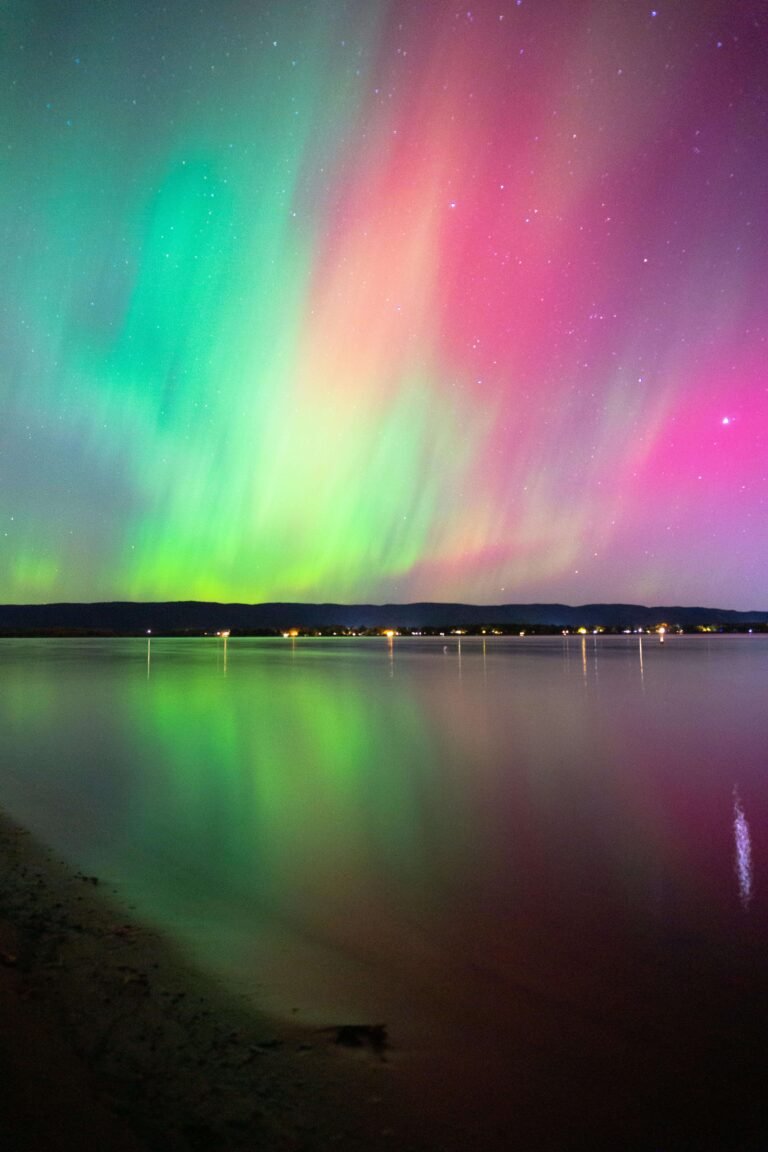There’s something magical about standing under the vast Canadian skies, waiting for the elusive aurora borealis to dance across the horizon. I’ve spent the last three years chasing this wonder of nature, traveling to some of the most remote and breathtaking places in Canada, and each time, the northern lights leave me in awe. From the moment the first shimmering green waves appear, it’s as if the universe is unveiling a secret just for you.
Canada is one of the best places in the world to witness this celestial phenomenon, offering endless opportunities to watch the skies light up. Whether you’re new to aurora hunting or as seasoned as I am, this guide will take you through the ultimate list of the best places to see the northern lights in Canada. From the rugged beauty of the Northwest Territories to the scenic shores of Newfoundland and Labrador, get ready to embark on a journey through Canada’s top aurora-viewing destinations. Let’s chase the lights together!
The northern lights occur when charged particles from the sun collide with gases in Earth’s atmosphere. The sun sends out solar wind—streams of these particles—that get caught in Earth’s magnetic field and interact with atoms in the atmosphere. Oxygen creates the green and yellow lights, while nitrogen is responsible for the purples and reds. The lights occur mainly around the polar regions because the magnetic field is strongest there, making Canada a top destination for viewing.
Seeing the northern lights is a bucket-list experience that goes beyond words. Each display is different, and witnessing it in real-time feels like you’re connected to something ancient and vast. There’s an emotional depth to standing under a sky that feels alive, with streaks of green, pink, and purple lighting up the night. It’s these moments that inspire people to chase the aurora again and again.
Auroras are most visible between September and April when the nights are longest and the skies are darkest. Although you can sometimes spot them as far south as Ontario or British Columbia, your best chances are in northern regions like the Yukon, Northwest Territories, and Nunavut. The further north you go, the more frequently you can see the lights.
The Northwest Territories is a premier destination for aurora chasers, often hailed as one of the best places in the world to witness the northern lights. The region’s minimal light pollution, vast wilderness, and consistently clear skies make it an ideal spot for uninterrupted aurora viewing. Whether you’re exploring remote communities or sticking to the more accessible areas, you’ll find that the northern lights often light up the sky, especially during winter months. What truly sets the Northwest Territories apart is the frequency and intensity of its auroral displays. With the region situated directly under the auroral oval—the zone where the lights are most active—you’re almost guaranteed an unforgettable experience.
Top spot:
Yellowknife – Known as the “Aurora Capital of the World,” Yellowknife offers some of the most consistent and vibrant displays of the northern lights. The city’s location under the auroral oval ensures breathtaking views throughout much of the year. What makes Yellowknife especially appealing is how accessible aurora viewing is from the city itself. You don’t need to venture far to witness the magic—just a short drive out of town will get you to prime viewing locations. Many tour operators in the area offer specialized aurora packages, including heated viewing huts, snowmobiling, and photography workshops, making it an ideal spot for both first-time visitors and seasoned aurora chasers.
Best time to visit:
Late August to mid-April – Yellowknife boasts up to 240 nights of visible aurora activity each year. The best months are between September and March when the nights are longest and darkest. If you’re looking for the most optimal time, aim for late September or March when the skies are dark, but the weather isn’t as harsh as mid-winter. In the colder months, the frozen lakes surrounding Yellowknife provide stunning reflective surfaces for the aurora, creating even more mesmerizing visuals.
Additionally, visiting during the fall means you can enjoy other outdoor activities like hiking, canoeing, or exploring the rugged wilderness before the deep freeze of winter sets in. For the full aurora experience, winter is unmatched—the longer nights, snow-covered landscapes, and the sheer intensity of the lights make Yellowknife a dream destination for aurora lovers.

Newfoundland and Labrador provide a more off-the-beaten-path experience for aurora chasers, combining the thrill of seeing the Northern Lights with breathtaking coastal views. The rugged, remote landscape amplifies the beauty of the aurora as it dances over the Atlantic Ocean and across dramatic cliff sides, offering a serene and intimate connection with the lights away from large crowds. It’s perfect for those looking for solitude while immersing themselves in nature’s grandeur.
Top spots:
Best time to visit: Winter months from December to March are ideal for viewing the aurora in Newfoundland and Labrador, as long, dark nights provide optimal conditions. January and February tend to have the clearest skies and cold temperatures, which often enhance the visibility of the lights.
Alberta is a spectacular destination for aurora viewing, thanks to its expansive, open skies and breathtaking mountain scenery. The contrast of the vibrant Northern Lights against the backdrop of the Canadian Rockies creates a photographer’s paradise, offering unique opportunities for capturing the lights in a stunning natural setting. Beyond aurora chasing, visitors can enjoy a variety of outdoor activities, including hiking, skiing, and soaking in hot springs, making it an ideal year-round destination.
Top spot:
Best time to visit: September to March is the ideal timeframe for aurora viewing in Alberta. During this period, the nights are long and dark, creating perfect conditions for spotting the aurora. Among these months, December to February is particularly advantageous, as the crisp winter air often leads to clearer skies, giving you the best chance to experience the ethereal beauty of the Northern Lights.

Ontario, with its well-developed infrastructure and accessibility, serves as an ideal location for those seeking to experience the Northern Lights without venturing deep into the remote wilderness. While it may be located further south compared to other premier aurora-viewing destinations, Ontario still offers captivating views of the aurora borealis under the right conditions. This makes it a fantastic option for travelers from southern regions, as they can easily reach excellent viewing sites without extensive travel.
Top spot:
Best time to visit: Late winter to early spring is the prime time for aurora viewing in Ontario, particularly from February to April. During these months, the skies tend to be clearer, and the nights are long enough to increase your chances of witnessing this natural phenomenon. Additionally, the colder temperatures often lead to crisp, clear nights that are perfect for aurora spotting.

Manitoba is a treasure trove for northern lights enthusiasts, with Churchill earning its reputation as one of the top aurora-viewing destinations in the world. This remote town, located on the shores of Hudson Bay, is not only famous for its polar bears but also for its stunning displays of the aurora borealis. The unique geographical positioning of Churchill under the auroral oval ensures frequent and vibrant light shows that leave spectators in awe. The combination of the lights with the breathtaking arctic landscape makes for an unforgettable experience.
Top spot:
Best time to visit: The best time to view the northern lights in Manitoba is from February to March. While the aurora can be visible year-round, the winter months provide the clearest skies and the longest nights, maximizing your chances of catching the lights in all their glory. During this period, temperatures may drop significantly, so come prepared with warm clothing to enjoy the experience comfortably.
The Yukon is a dream destination for aurora chasers, celebrated for its expansive wilderness and stunning natural beauty. This northern territory boasts dark skies, which are crucial for optimal aurora viewing, making it one of the best places in Canada to experience the magic of the northern lights. The remote landscapes are not only picturesque but also relatively untouched, allowing for breathtaking displays of the aurora borealis that seem to dance across the sky.
Top spot:
Best time to visit: The best time to visit the Yukon for aurora viewing is from September to April. During this period, the long nights create excellent opportunities for witnessing the lights. Winter months, especially from December to February, are particularly noteworthy as they offer peak aurora activity. With the cold, crisp air, the skies are often clear, maximizing your chances of seeing the lights. Be sure to dress warmly, as temperatures can drop significantly during these months, but the experience of seeing the northern lights in the serene Yukon wilderness is truly worth it.
Nunavut is a haven for those seeking the most remote and untouched landscapes for aurora viewing in Canada. This vast territory, known for its pristine natural beauty, offers an authentic Arctic adventure unlike any other. The sheer isolation of Nunavut means you can escape the hustle and bustle of city life, allowing for a serene environment where the northern lights can be witnessed in their full glory. With minimal light pollution and expansive, open skies, Nunavut presents unparalleled opportunities to experience the magic of the aurora borealis in its most unspoiled form.
Top spot:
Best time to visit: The best time to visit Nunavut for aurora viewing is from December to April. During these months, the long, clear winter nights create ideal conditions for witnessing the northern lights. The deep winter temperatures can be quite frigid, often plunging well below freezing, but this cold air typically corresponds with clearer skies, enhancing your chances of seeing the aurora. December, with its extended darkness, can be particularly enchanting, offering long hours of potential viewing.
To make the most of your northern lights adventure, consider these tips:
If you’re planning a trip specifically to see the northern lights, here are some additional top destinations to consider:
The Northwest Territories is widely recognized as one of the top locations in the world for aurora viewing, with Yellowknife often taking the spotlight. However, there are several other fantastic spots to experience the lights:
Newfoundland and Labrador offers a more intimate experience with the aurora, where you can enjoy the lights dancing over dramatic coastal landscapes. Here are some noteworthy locations:
Alberta’s stunning natural landscapes, including the Canadian Rockies, offer exceptional opportunities to witness the northern lights. Some great spots in Alberta include:
While Ontario is located further south, several areas still provide fantastic opportunities for aurora viewing:
Manitoba is renowned for its consistent and spectacular displays of the aurora borealis, particularly around the town of Churchill. Other notable locations include:
The Yukon is a dream destination for aurora chasers, with its remote wilderness providing incredible opportunities for viewing:
Nunavut offers the most remote and untouched landscapes for witnessing the aurora borealis. Here are some exceptional locations to consider:
Here are the answers to your questions:
While it’s possible to see the northern lights frequently, sightings depend on solar activity and weather conditions. Clear, dark skies away from light pollution increase your chances.
Avoid using bright lights or flash photography, as they can ruin your night vision and disturb others trying to enjoy the experience. Also, stay quiet to fully appreciate the beauty of the lights.
The northern lights are generally seen as a beautiful natural phenomenon and a source of wonder. They are not considered bad; rather, they inspire awe and fascination in those who witness them.
While the northern lights are most visible in northern latitudes, they can appear in various directions. It’s best to scan the entire sky rather than just facing north.
Various cultures have superstitions surrounding the northern lights, often viewing them as spirits or messages from the dead. Some believe that seeing them brings good luck or forebodes change.
Some people claim to hear faint sounds associated with the northern lights, like crackling or hissing. However, scientific evidence for audible sounds is limited, and most experiences are visual.
The northern lights themselves do not have a smell, as they are a visual phenomenon caused by charged particles in the atmosphere. However, the environment where you see them, like snowy landscapes, may have its own scents.
After three years of chasing the northern lights across Canada, I can confidently say that no two displays are ever the same. Whether it’s a quiet evening in Yukon’s wilderness or a vibrant burst of light over the snowy plains of Churchill, the northern lights never fail to inspire awe. Canada’s vast, pristine landscapes and consistent aurora activity make it the ultimate destination for any aurora chaser. If you haven’t yet experienced the beauty of the aurora borealis, now’s the perfect time to start planning your trip. With so many incredible destinations to choose from, the only question left is: where will you chase the lights next?